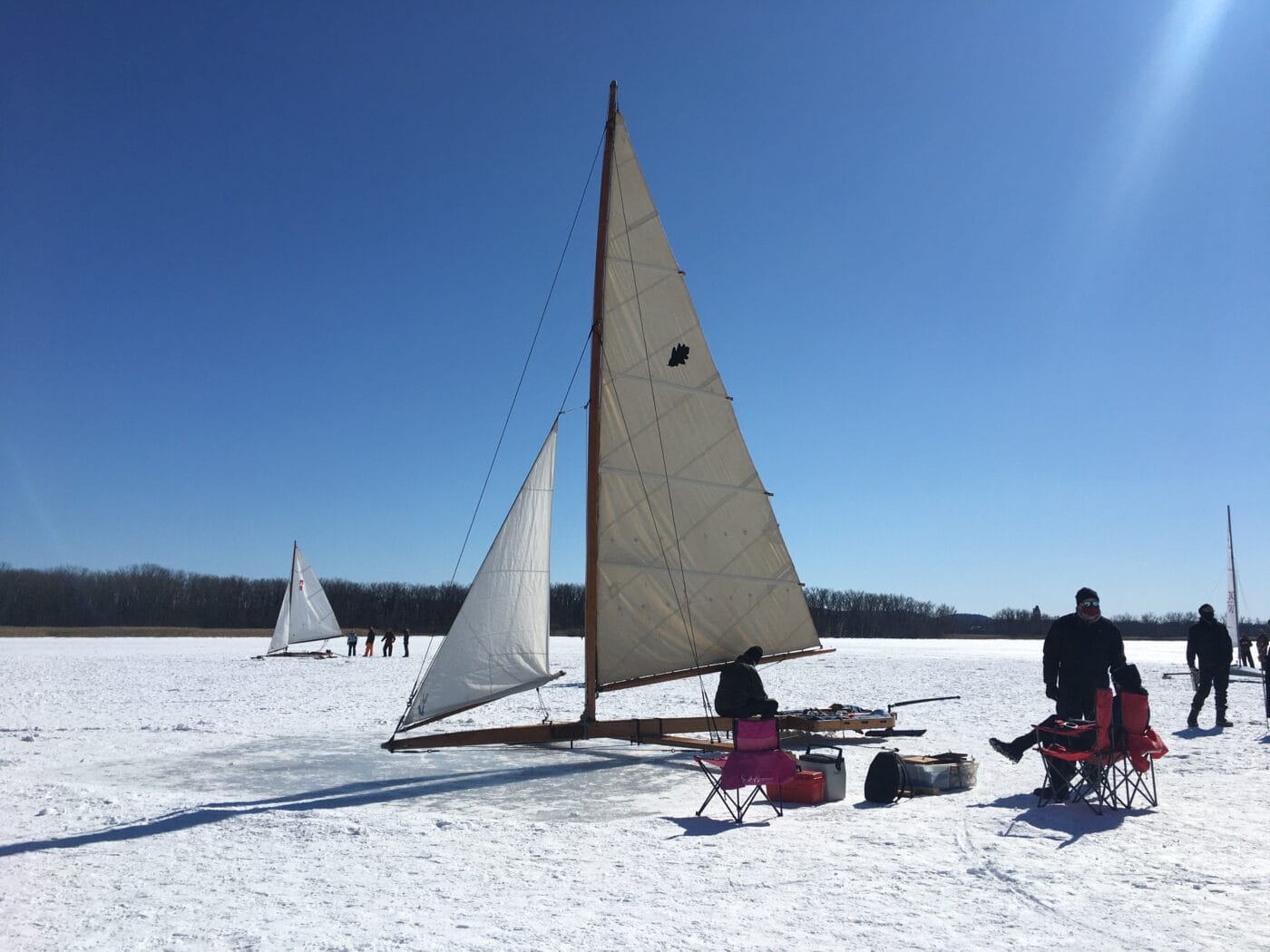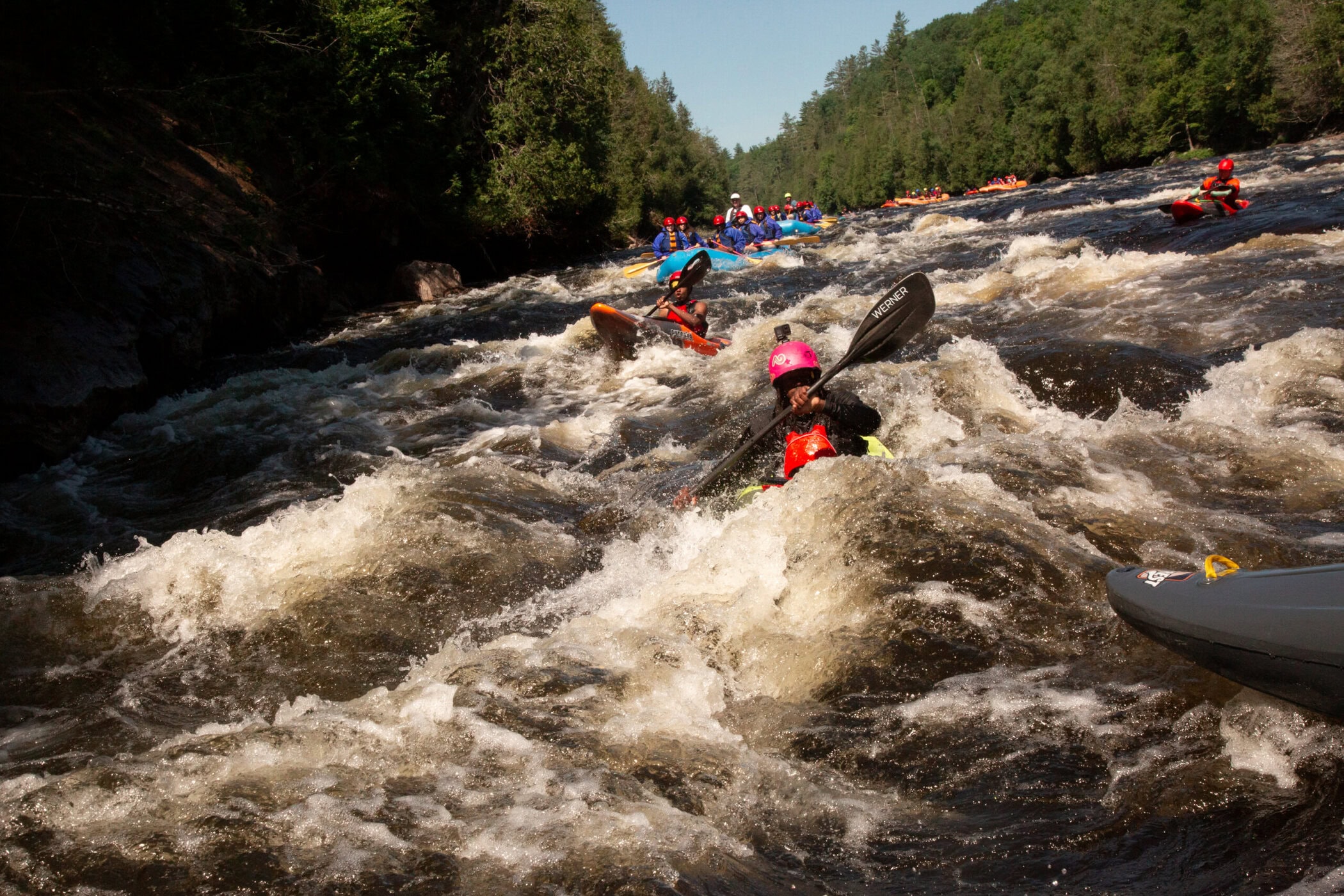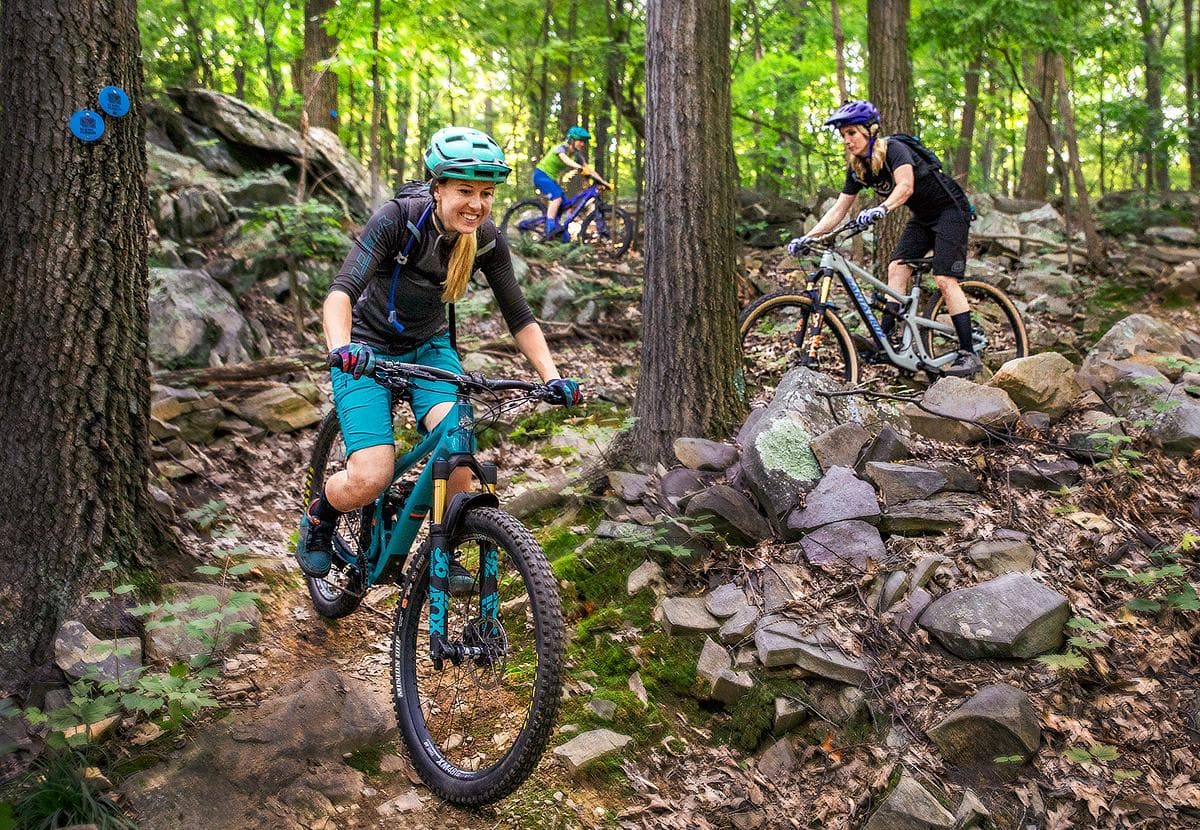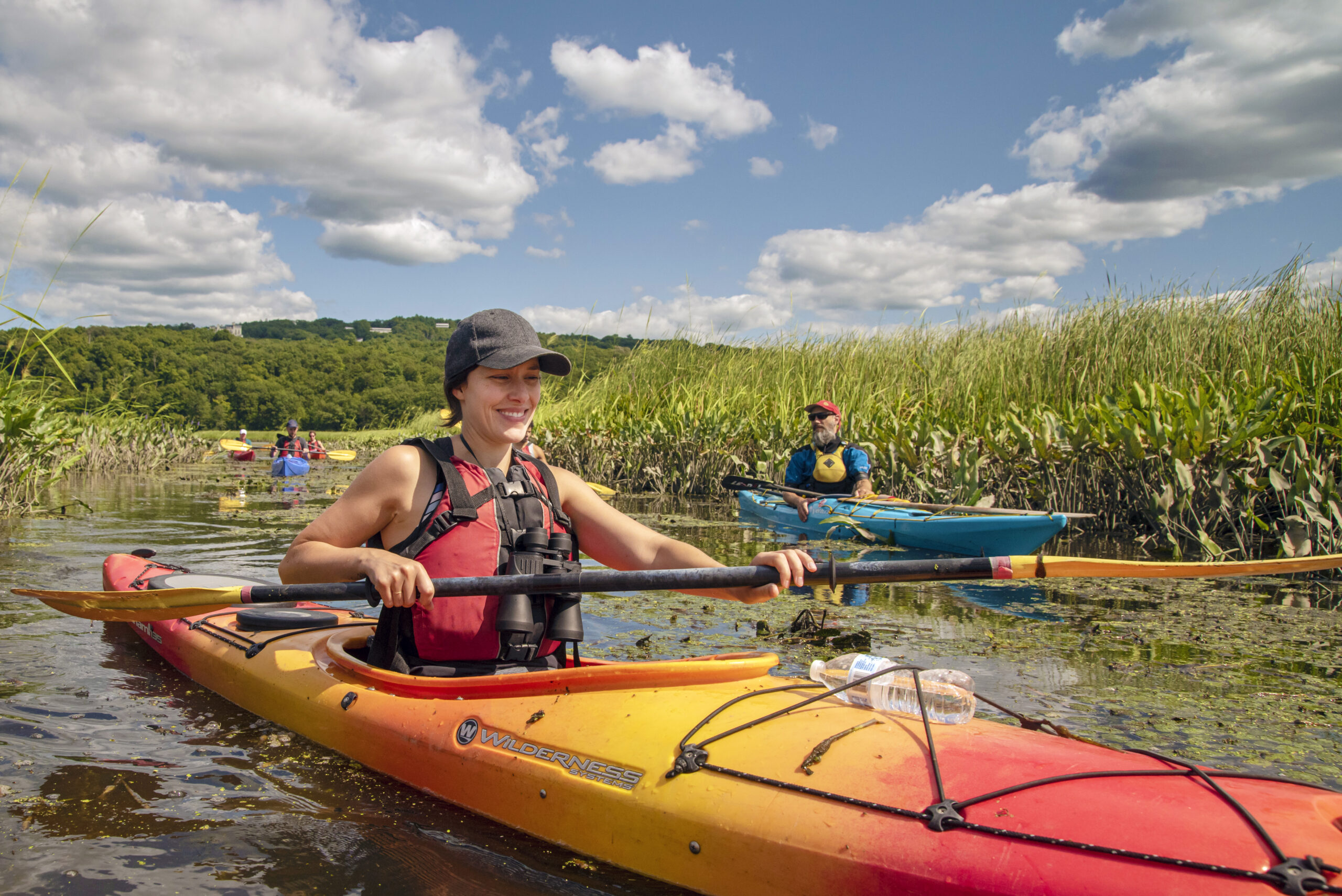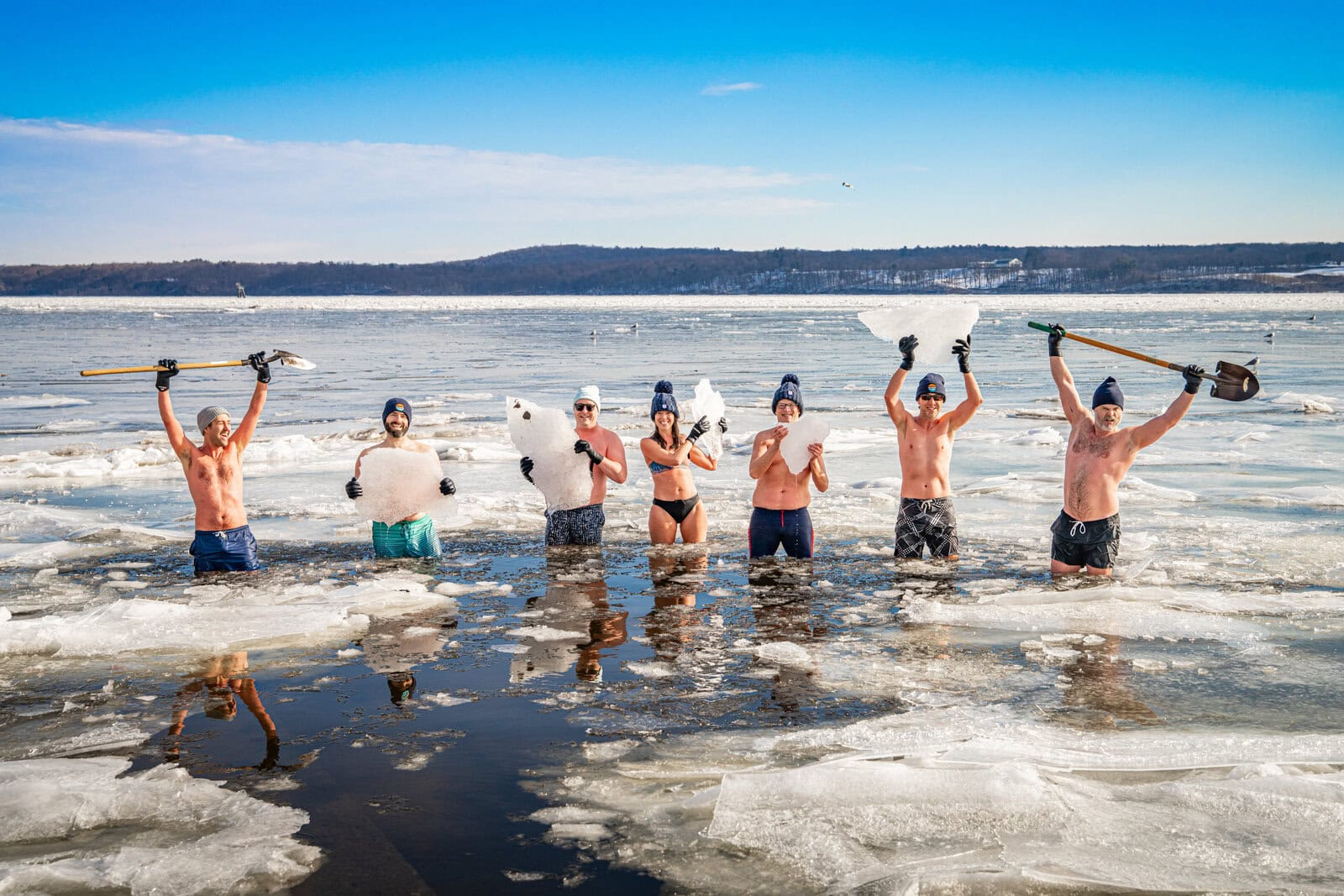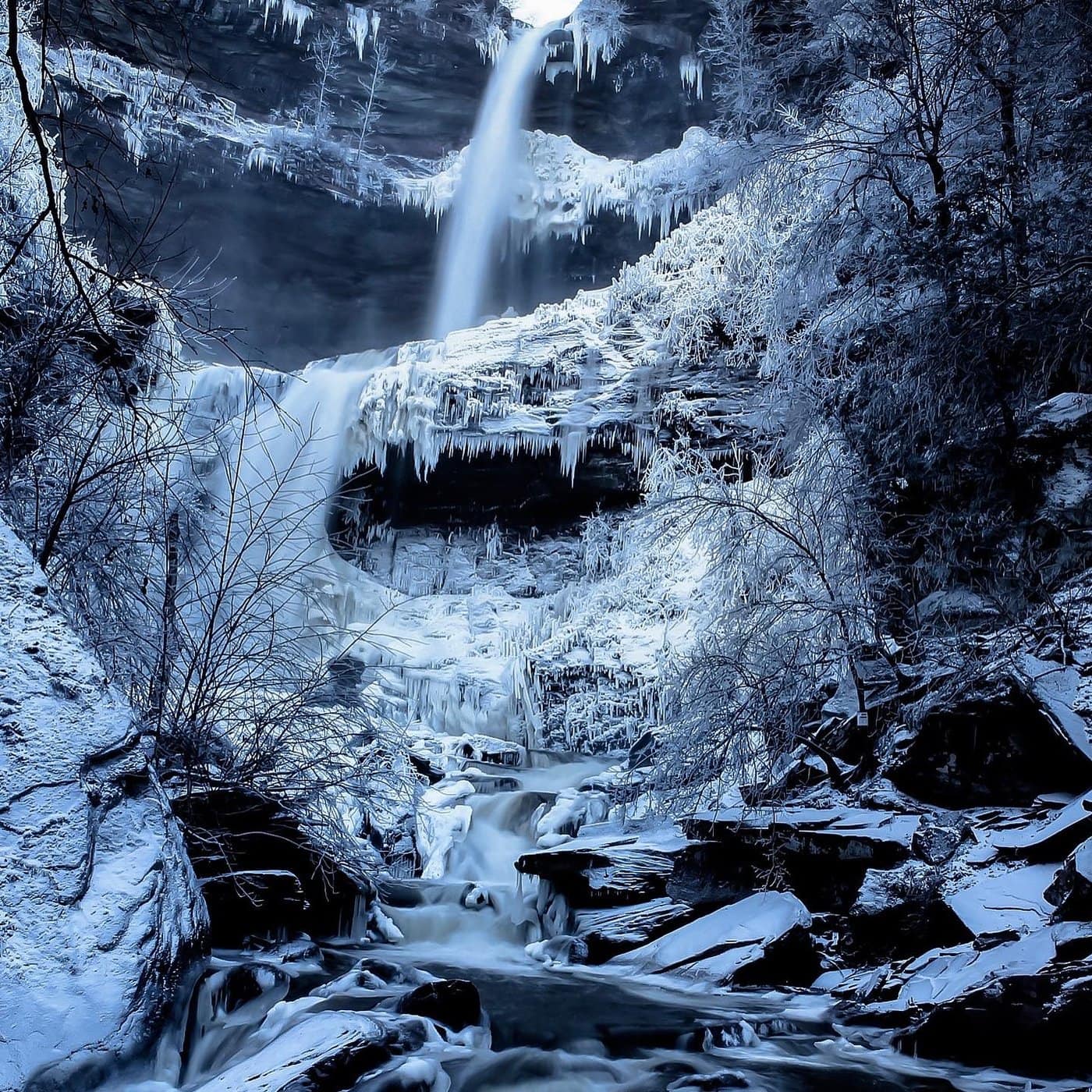It’s rare to see sailboats on the Hudson this time of year. But in the late 19th and early 20th centuries, sail-powered iceboats carrying famous valley residents like FDR regularly sped across the frozen waters of the river and local lakes as fast as cars go today. Today, a passionate group of iceboaters tries to keep the tradition alive, always hoping to get their vessels up to speed and introduce new people to their exhilarating sport.
The members of the Hudson River Ice Yacht Club lovingly maintain several dozen historic vessels. While they keep them in working trim, in recent years they’ve had little opportunity to get them on the river due to warm winters and too little ice — yet another casualty of the climate crisis.
“We’re so desperate for a good week of sailing,” says John Sperr, treasurer of the club. “It’s extremely frustrating. There’s not enough reward for the amount of effort that goes into it.” Club member Reid Bielenberg, who has been iceboating for more than half a century, takes a glass-half-full attitude about the limited recent sailing opportunities: “That makes the adventures you do accomplish all the more valued,” he says.
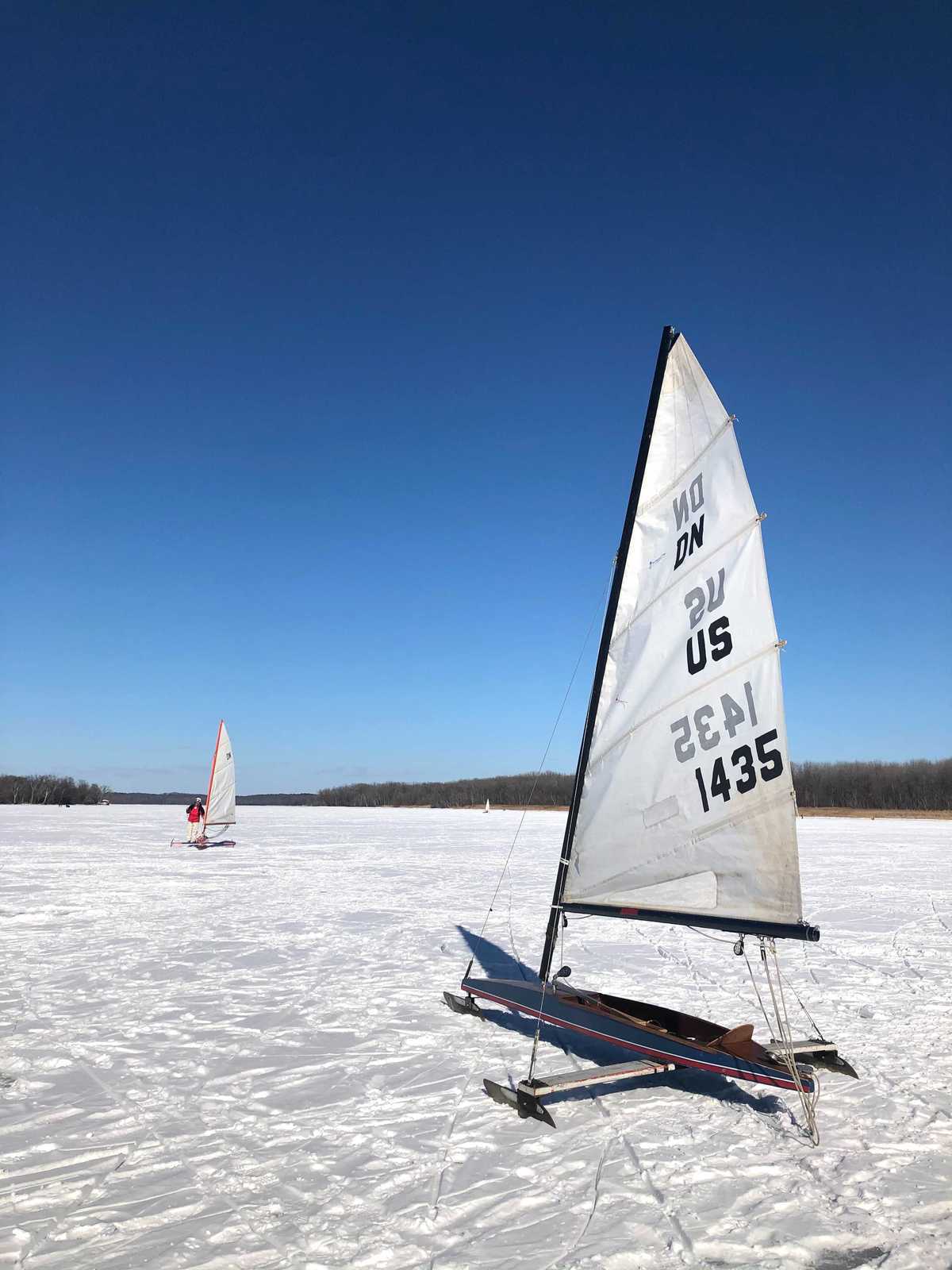
Faster than a speeding locomotive
It’s a far cry from the “golden age” of Hudson River iceboating, which dates roughly from 1880-1910, when it was a pastime of riverfront estate owners looking for year-round thrills. But the practice of sailing on the river’s ice began much earlier, with Dutch colonists who attached runners to their boats to transport goods and people during winter.
In 1790, Poughkeepsie’s Oliver Booth designed a craft geared specifically for travel on ice. Essentially a square box, it featured three runners — two fixed and one that moved, allowing a crew member to steer. It quickly caught on for transportation, recreation, and even warfare. During the War of 1812, plans were hatched to destroy a British ship frozen on Lake Champlain with an iceboat filled with explosives. According to Sperr, Booth’s design “is generally credited with starting the recreational iceboat movement in the United States.”
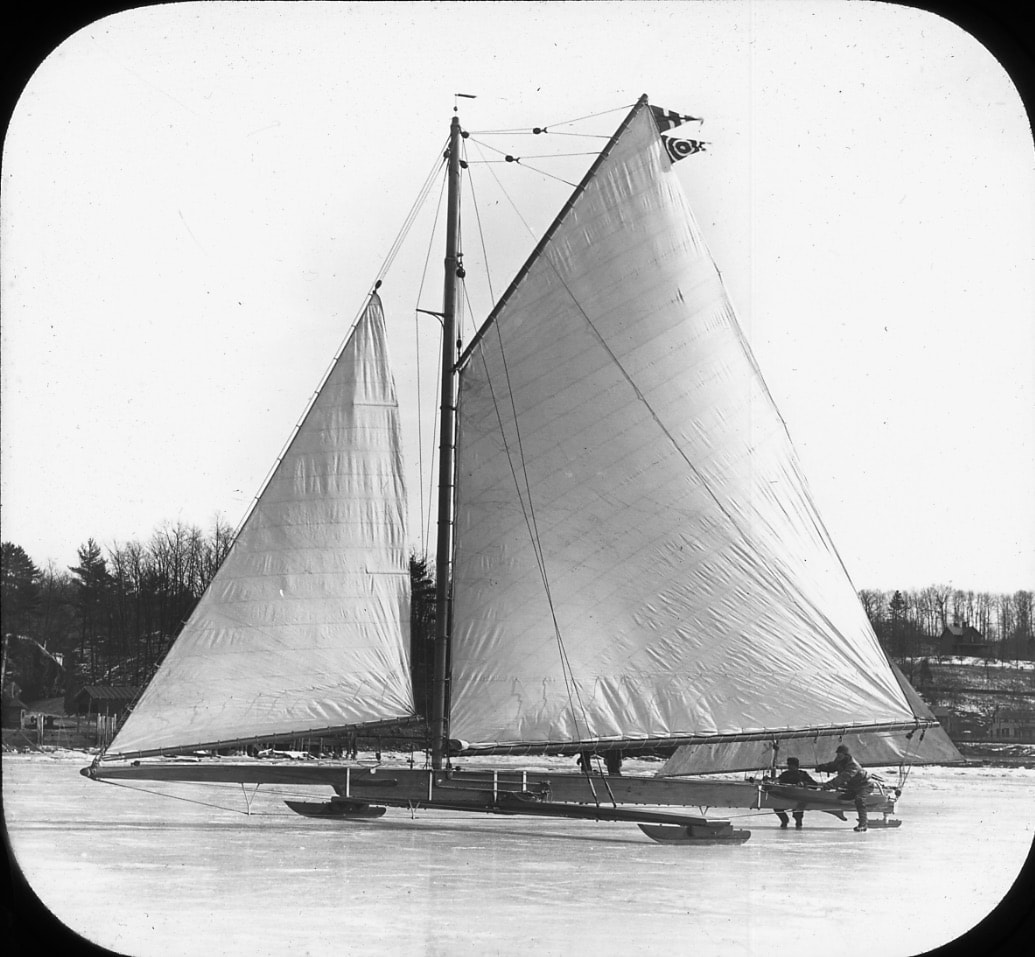
Benson Lossing’s The Hudson, published in 1866, offers a vivid account of iceboating in Peekskill Bay: “Wrapped in furs and shawls, over-coats and cloaks, men and women, boys and girls, were enjoying the rare exercise with the greatest pleasure. Fun, pure fun, ruled the hour. The air was vocal with shouts and laughter; and when the swift ice-boat, with sails set, gay pennon streaming, and freighted with a dozen boys and girls, came sweeping gracefully toward the crowd — after making a comet-like orbit of four or five miles to the feet of the Donder Berg, Bear Mountain, and Anthony’s Nose — there was a sudden shout, and scattering, and merry laughter, that would have made old Scrooge, even before his conversion, tremulous with delight.”
As technology advanced during the 19th century, so did the speed of iceboats, increasing the desire to race them. Soon, clubs sprang up all along the upper stretches of the river, including Newburgh, Hyde Park, and Poughkeepsie. Poughkeepsie became the epicenter of the sport (as it would for intercollegiate rowing four decades later) because it sat along a 20-mile stretch of the river offering ideal winter sailing conditions — snow-cleared ice at least six (and preferably eight) inches thick, a long spell of cold weather, and sustained winds around 15 mph.
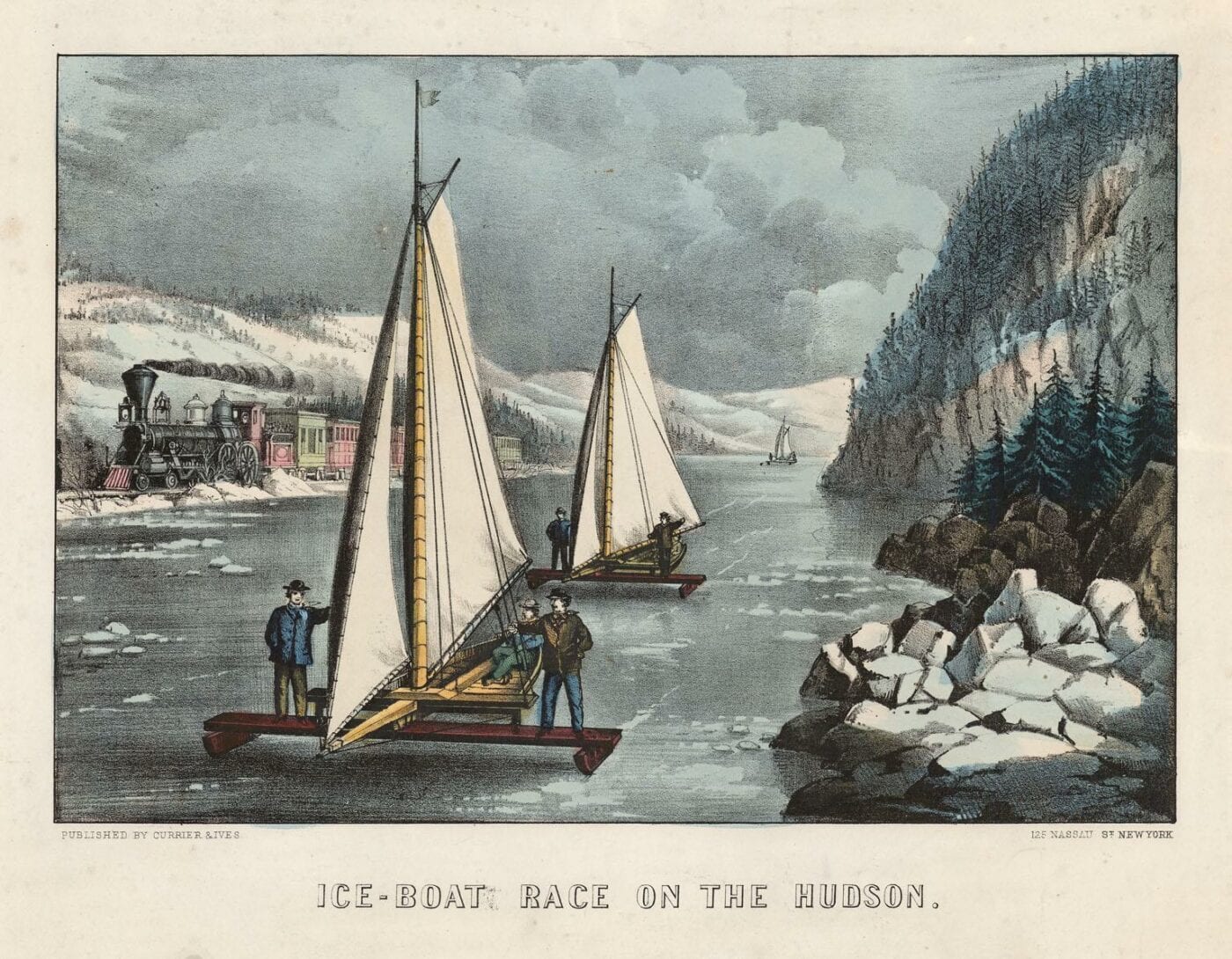
On race days hundreds, if not thousands, of people huddled on the ice near the city to watch the boats compete — either against each other or locomotives. The iceboats usually beat the trains; for a time, they were the fastest vehicles on the planet, capable of reaching speeds of 75 mph or greater, and occasionally exceeding 100 mph.
The racing iceboats owned by the wealthy were full-on yachts. Along with being huge — John Roosevelt’s Icycle spanned 70 feet, hoisted 1,000 feet of sail, and had to be moved on a railroad flatcar — they featured carved figureheads, a variety of woods, even gold leaf.
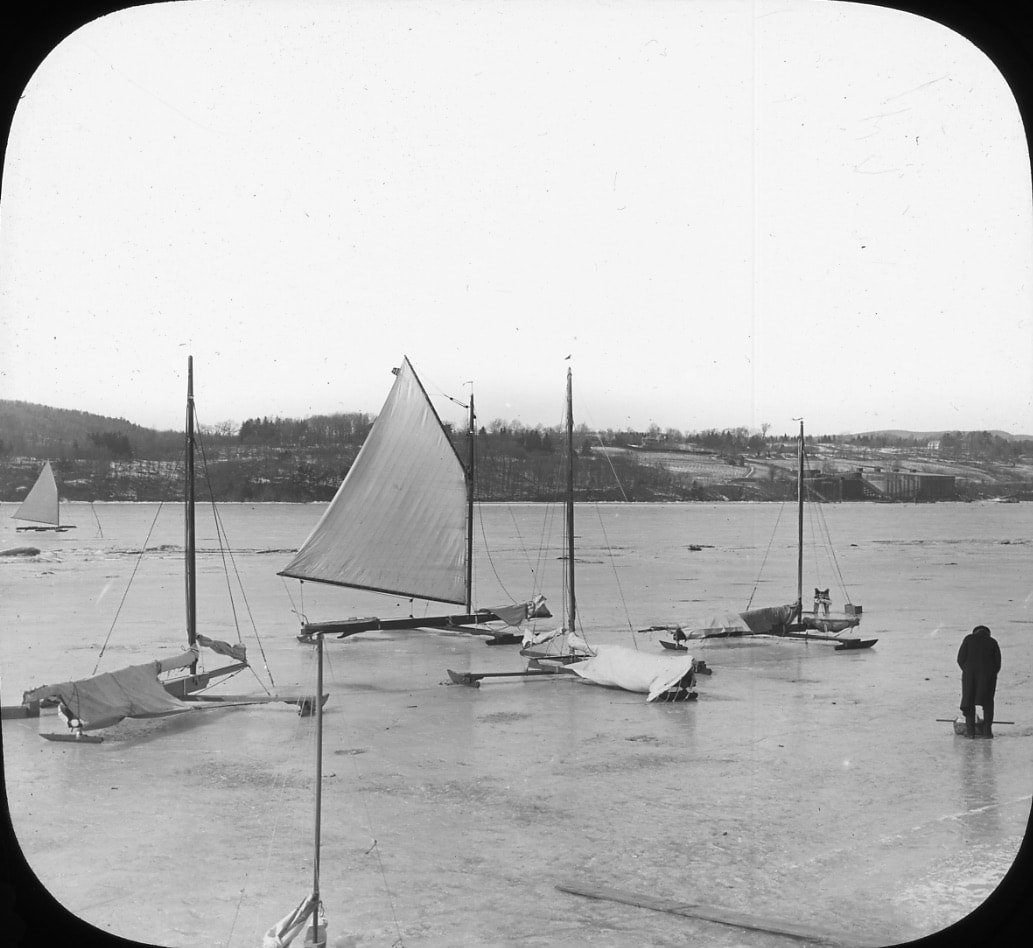
Those wanting the fastest ice yachts relied on Jacob Buckhout, whose workshop first was located in Highland, beneath today’s Mid-Hudson Bridge, before it moved to Poughkeepsie. Buckhout built both the Icycle and the Jack Frost, which belonged to Archibald Rogers, Roosevelt’s Hyde Park neighbor. They each won the Ice Yacht Challenge Pennant of America, the sport’s Kentucky Derby, four times.
Despite the name, ice yachts hardly resemble boats. They look more like a cross with a pole (the mast) rising from where the two beams meet. Cables and turnbuckles hold the beams together, while one or two sails propel the craft across the ice on machete-sized runners.
One or two sailors lie prone, on their stomachs or sides, in a cockpit on the main beam. With their bodies just 18 inches off the ice, they can travel faster than a car on the interstate — and without brakes. (To stop, you have to turn the boat into the wind.)
Is it scary? Not to Sperr, who took his first sail in an iceboat in 1982 and has been hooked ever since. “It’s like flying an airplane — incredible exhilaration,” he says before going on to describe some of the thrills while out on the Hudson: “wind in your face…sailing by coyotes on the ice, hunting ducks…passing tugboats.”
Bielenberg, who owns the Vixen, built in 1885 for John Roosevelt, says that while some passengers complain about the bumpiness — “they say it feels like you’re going over railroad tracks” — “it’s a pretty thrilling ride for something that’s 130 years old.” (Click here to take a “ride” on the Vixen.)
“We love giving people rides”
The Hudson River Ice Yacht Club was founded in 1885 when some members of the Poughkeepsie Ice Yacht Club, the nation’s first organization devoted to the sport, broke away over a dispute. It boasted the fastest boats in the country, including the Icycle.
The club also included the Hawk, owned by John Roosevelt’s nephew, Franklin D. Roosevelt. The future president raced the boat, a Christmas gift from his mother, primarily during his college years. It’s now in the collection of the Home of Franklin D. Roosevelt National Historic Site and makes occasional appearances at special events.
The club continued to flourish until disbanding around World War I, when enthusiasts “discovered automobiles and airplanes,” says Sperr. But in the 1960s, interest in iceboating and its heritage on the Hudson was revived and the club re-formed, this time less elite and more approachable. Its standard-bearer was Cornwall’s Ray Ruge, dubbed “Mr. Ice Boat,” who owned and restored several of the historic vessels. Through his enthusiasm and writings, he encouraged others to follow his lead, including a teenage Bielenberg, who became interested in the sport after reading an article by Ruge in Boys’ Life magazine.
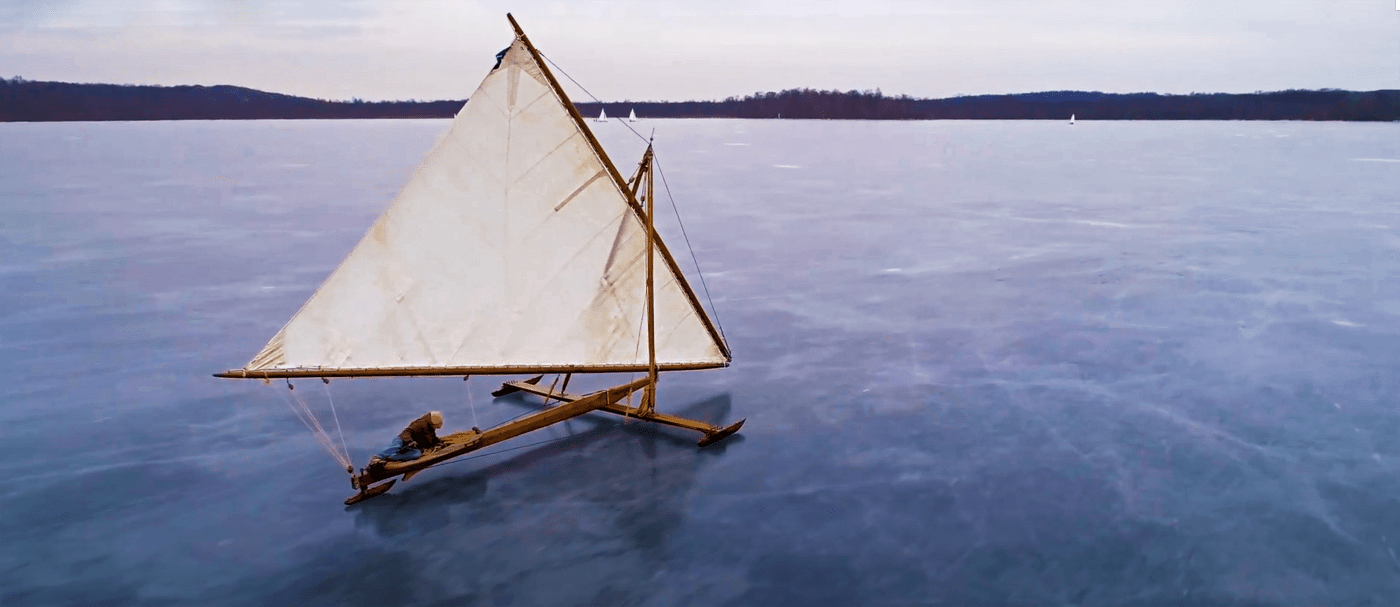
From the 1970s up to 2000, sailors could regularly count on favorable conditions. Since then, says Bielenberg, “nearly half the years have gone by without any iceboating at all.” The last great congregation on the river, a “once-in-a-lifetime” event, one longtime sailor told the New York Times, occurred in 2014 near Barrytown.
When ice in the open Hudson doesn’t cooperate, boaters sometimes find sailing fail-safes in Tivoli Bay or Orange Lake in Newburgh, where four generations of the Lawrence family have raced boats. Frustrating weather aside, the club remains strong — about 70 people attended its recent annual meeting — and it’s always on the lookout for new members.
A weather forecaster acquaintance of Sperr’s has suggested that luck might be on the club’s side this season, predicting a February cold snap for the valley. “If it comes, we’ll be there. We’re so desperate for a good week of sailing,” he says. If the stars indeed align — you can keep abreast of sailing conditions on the club’s website — don’t miss the show. And be prepared to go for a sail. Adds Sperr, “We love giving people rides.”
